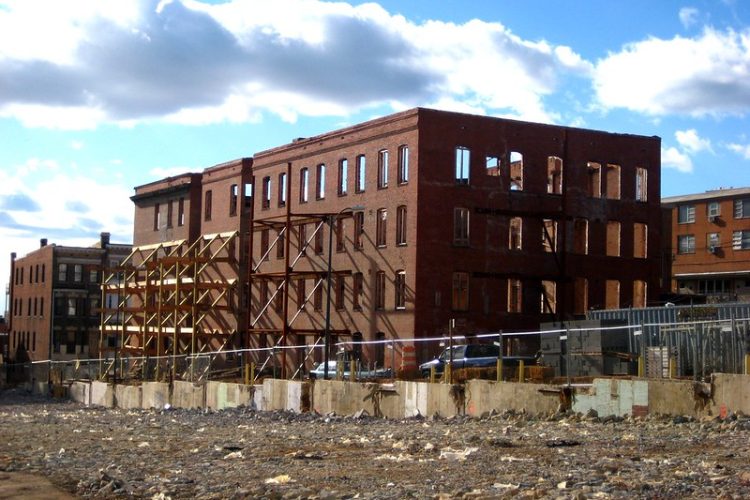June 4, 2025
Washington, D.C. has numerous old buildings. The building owners usually want to sell, repair or renovate them. Some owners fail to adequately maintain older buildings. Over the years, the D.C. government has taken an increasingly strict approach to unmaintained buildings. In some instances, the government ignores property that causes problems for adjacent residents. The government’s aggressive approach in such matters has put owners in a bind. The owner may struggle to maintain or remodel the property while simultaneously fight off legal notices.
In 2023, the D.C. Court of Appeals decided a case, 1417 Belmont Glen Community Development LLC vs. D.C., where a property owner brought a constitutional due process lawsuit against the D.C. government for demolishing its building on safety grounds. Belmont challenged the sufficiency of the notice provided to it as the owner. The case is important to the owner or occupant of any D.C. property that has or could have a maintenance or renovation issue. D.C. property owners ought to treat Notices of Violation and Notices of Infraction with appropriate seriousness.
Belmont owned a property in D.C. with an existing building. Belmont intended to develop it into a condominium association. In 2008, the building partially collapsed. The D.C. Department of Consumer and Regulatory Affairs (DCRA, now Department of Buildings) found it to be in imminent danger of further collapse, presenting a life safety issue. In 2009, DCRA issued a notice of violation and notice to abate (NOV). The NOV directed Belmont to demolish or repair it to make it safe. The NOV quoted statutes requiring structures that are unsafe or dangerous to be taken down or made safe as deemed necessary. The NOV mentioned that the mayor may summarily correct the violations where there is an imminent threat to safety. The NOV stated that the owner ought to be provided with notice by personal service or registered mail and by conspicuous posting. The NOV included deadlines and indicated an opportunity to request a hearing.
DCRA sent out the NOV by regular first-class mail and posted it on the door of the premises. Belmont contended that it never received a copy of the NOV. DCRA did not hear from Belmont. A second major collapse occurred. Approximately three months after the NOV, the D.C. government demolished the structure.
Belmont filed a lawsuit against the D.C. government, alleging violation of its Fifth Amendment due process rights by failure to provide proper notice. Note that the Fifth Amendment applies because D.C. is a federal city and not a state. The Superior Court initially granted Belmont’s motion for summary judgment. Later, upon D.C.’s motion to reconsider, the court did a 180-degree turn, entering judgment in favor of the government. Belmont appealed.
D.C. admitted that it did not follow the statutory registered mail notice requirements that applied. On appeal, Belmont argued that D.C.’s failure to follow the local procedural requirements in connection with the deprivation of a constitutionally protected property interest amounted to a constitutional due process violation. However, federal and D.C. courts have held that the failure to follow procedural statutes does not by implication amount to a constitutional violation. An error of state (or D.C.) procedural law does not automatically implicate the constitution.
The Court of Appeals agreed with the Superior Court’s reconsidered ruling that a combination of (a) regular first-class mail and (b) posting on the property satisfied minimum constitutional due process requirements. The constitution requires “adequate” notice, not proof of “actual” notice.
What is important about this case is not merely the application of these constitutional law principles, but the question as to whether the content, form and timing of the notice provided was sufficient for the abatement action taken. Many Americans assume that robust procedural guardrails exist and must be observed before the local government can tear down the building that the owner is in the process of renovating.
Initially the Superior Court was dissatisfied with the decision of the D.C. government to raise the building when the NOV did not expressly inform Belmont that it would summarily do so if there was not a correction. The NOV was issued before, not after D.C. made a governmental decision to demolish the building. In its reconsidered ruling, the Superior Court observed that the NOV was “ambiguous” as to whether additional notice would be given before razing the building. The Court of Appeals went even further in validating the government’s powers, finding that the NOV unambiguously provided procedural due process of the imminent possibility that the government would tear down the building if Belmont failed to take action.
Note that the Superior Court and the Court of Appeals, at various times construed the legal characteristics of the NOV in different ways suggests that a homeowner attorney might also find the NOV confusing. What this appellate opinion means for owners is that the courts can be expected to construe any NOV in a manner friendly to the government’s prerogatives. It would be a mistake to assume that there would be subsequent regulatory notice of lawsuit before the building would be demolished. This does not mean that the agencies can do whatever they want. This means that property owners must exercise caution.
The Belmont opinion describes the facts in a manner that does leave the reader feeling particularly sorry for the landowner. The opinion strongly suggests that Belmont was negligent in monitoring the property. However, in other cases the facts that can be put into evidence may appear less clear 1. The statutes do not require the building to partially collapse before the government may take drastic action.
Given this appellate decision, it would be a mistake for any D.C. property owner to assume that the government would make a diligent effort to get in contact with her before taking corrective action, bring a lawsuit or a specific notice to demolish, or provide “grace” in a situation where it would be obvious that the property owner was in the process of renovating or improving the structure viewed as requiring maintenance.
Property owners can take precautions to avoid harsh results. The property owner can keep the government appraised of her best mailing address for legal notices. The owner can monitor the property for unsafe conditions or posted notices. The owner can prevent structures from becoming unsafe by conducting timely repairs. When a NOV or Notice of Infraction is posted or mailed, the owner ought not to view it as an advisory memorandum that can be ignored if it is wrong. For reasons of temperament or cultural background, some may be inclined to show their disapproval of an erroneous notice by ignoring it. This is quite risky. Any NOV, NOI or similar legal document ought to be viewed as something like a lawsuit or final court order which should be contested or appealed as legally required. On the flipside, the homeowner ought not to consider these developments to mean that if a NOV or NOI is issued, there is nothing that can be done to protect her rights. In many cases, the property owner ought to consult with an attorney to discuss what action ought to be taken. If nothing else, the Belmont case shows that simply doing nothing and seeing what happens should be avoided. Ordinarily, the property owner needs to submit a response form within a defined deadline to obtain a hearing before the agency or the Office of Administrative Hearings. As the Belmont case shows, the NOV or NOI does not necessarily need to be clear in order to allow the government to take adverse action.
One frequent issue in such matters is that the abatement or hearing request deadline stated in the NOI or NOV is inadequate to find a contractor, apply for a permit, and to abate the issue in the time allotted. The inadequacy of the time allotted forces the homeowner to either “dual track” the abatement with the legal hearing request and appeal or to abandon a legal challenge. But by abandoning such a challenge the homeowner opens herself up to drastic action like what is seen in the Belmont case.
Case Citation:
1417 Belmont Cmty. Dev., LLC v. D.C., 302 A.3d 512 (D.C. 2023).


